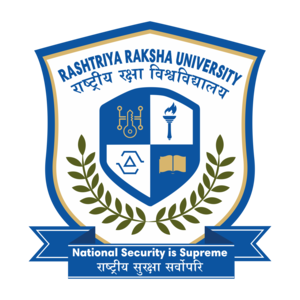
Sexual Harassment at Workplace
Sexual Harassment at Workplace
- Jay Gajbhaiye
INTRODUCTION
Sexual abuse is a widespread issue that impacts all people in the country regardless of the occupation they are in, however, the justice structure tends to be ineffective, and so they refuse to provide them with protection. It\'s not because all people residing in countries with advanced legal structures are confronted with certain issues such as getting shot out of jobs, mocked, social stigma, etc.“Sexual abuse is about women being oppressed by males, and is used to convince people that they are inferior to males”. Such ideals of men face the biggest obstacle in curbing sexual abuse in a culture where brutality against women is viewed solely to display the dominant norm working.
“Sexual harassment is built into social expectations and exacerbated by on-the-job relations to influence”. If there\'s ample focus on employee education, regulatory reforms are unlikely to achieve. Workplaces ought to develop their own detailed rules about how workplace misconduct should be dealt with. Rather of cobbling teams together at trial interference, there will always be a framework and a remedy path in operation.
Sexual Harassment involves such unwanted sexual conduct (whether overtly or implied) as:
a) “Physical contact and advances”,
b) “A demand or request for sexual favors”,
c) “Sexually colored remarks”,
d) “Showing pornography” and
e) “Any other unwelcome physical verbal or non-verbal conduct of sexual nature”.
There are numerous lawsuits brought before India\'s Supreme Court, but not all lawsuits resulted in creating modern sexual assault regulations. In 1997, the Supreme Court sought to set rules in the case of Vishakha. These guidelines have been somewhat successful because the supreme court has argued in this case “that there is a need for separate laws, but it has not received the required attention”.
SEXUAL HARASSMENT: THE LAW
Under the Indian statute, sexual harassment infringes women\'s fundamental rights to gender equity and to live with dignity according to Articles 14 and 21. Although there are no specific laws in India to curb on-the-job sexual abuse, there are several provisions in other regulations that provide protections against women\'s sexual assault, as in IPC:
• “Section 294 deals with obscene acts and songs at a public place”.
• “Section 354 deals with assault or criminal force against women”.
• “Section 376 deals with rape”.
• “Section 510 deals with uttering words or making gestures which outrage’s a women’s modesty”.[1]
Another legislation enacted by the legislature to secure the rights of women is “Indecent Representation of Women, Act (1997)”.[2] This act was not included in instances of sexual assault, but includes some clauses that may be seen in 2 ways:
1)When someone harasses another person by displaying books, photos, sculptures, videos, etc, he is liable for immoral women\'s portrayal where he should be punishedfor at least 2yrs. imprisonment.
2“Section 7 of this Act punishes companies if women are represented indecently, such as showing pornography).”[3]
Women who are assaulted can even go to civil courts for tortious acts such as emotional distress, physical abuse, lack of income in the victim’s work, etc.
SEXUAL HARASSMENT: CASE LAWS IN INDIA
There are specific cases that have been put before the Indian courts and in most instances, the decision has empowered women to lodge more grievances than ever:
1) Apparel Export Promotion Council v A.K Chopra
Throughout that case, the Supreme Court held that sexual misconduct constituted ethnic discrimination against women and also claimed that any action or attempt by a superior to interfere will cause sexual abuse.[4]
2)Mrs. Rupan Deol Bajaj v Kanwar Pal Singh Gill
This case has altered the sense of the term, modesty, and privacy such that any sort of harassment or disturbance of the private or public life of a woman has deemed an offense.[5]
3) Vishaka & others v State of Rajasthan & others
In this situation, the Supreme Court laid forth the following rules that regarded it not merely as a particular woman\'s private accident, but also as a breach of her civil rights. Such rules are notable because sexual assault is defined as a distinct form of constitutionally prohibited conduct for the first time. They apply to all the employers before Parliament passes some further laws of this regard. Some of the Instructions are:
• It is the responsibility of any company/employer to give any female employee a sense of protection.
• The government will enact stringent rules and legislation to prohibit sexual abuse.
• Any conduct of this type should lead to administrative measures and criminal charges against the wrongdoer should also be brought.
• The company/organization will provide a well-established appeal process to resolve the victim\'s grievances which should be subject to a fair amount of time.
•This settlement process should be in the form of a complainant committee chaired by a female leader and at least 50 percent of committee members will be female so that claimants will not feel embarrassed when discussing their grievances.[6]
4) Medha Kotwal Lele & Ors. v Union of India & Ors
“This case allowed the Vishakha’s case to efficiently implement the guidelines by sending notices to all the united states and territories to impart the required measures”.[7]
FAILURE TO IMPLEMENT THE SEXUAL HARASSMENT RELATING LAWS:
Section 354 and section 509 of the IPC is the penal law enforced in most instances of sexual assault, although the validity of such sections is restricted. We may also conclude that there is no clear policy position at work against sexual assault.[8]
The proposed“Protection of Women against Sexual Harassment at Workplace”, 2007 is presently pending with the Ministry of Women and Child Development. There are several recommendations that women\'s organizations bring on amendments to the legislation:-
• “To provide for procedural training of members of the complaints committee”.
• “To modify provisions of section 11 (no action will be taken if the allegation against the respondent is not true) and section 12 (if a local committee concludes that the allegation against the respondent is false then action will be taken against the complainant) of this bill”.[9]
SOME PREVENTIVE STEPS TO CURTAIL SEXUAL ASSAULT
Changing people\'s views is a fundamental prerequisite for women to enact some laws in society. This implementation of laws contributes to defense from inappropriate sexual behavior.
1.The feedback system should be well set up and in close contact with the female employee. The woman shouldn\'t feel obscure in moaning about the issues she faces during occupational jobs. The Committee for Complaints will treat any grievance extremely serious and effective steps will be taken within a fair period.
2. Female staff should not be reluctant to address any sex-related abuse and it is their responsibility to inform the complaint committee promptly of any such act.
3.To all male and female workers, each company should perform sexual assault sensitivity training. This shared understanding would continue to build an environment of animosity and it will make workers more secure. Such awareness will also address the effect on women of sexual assault.
4. Commitment to the effective application of policies and procedures against sexual assault at all levels of the company is needed.
5.Women should be empowered against sexual assault and should be encouraged to talk about it.It will affect them in some way, which will let them aware that their allegations would not be mocked or insulted.[10]
CONCLUSION
In India, sexual abuse at the workplace is extremely prevalent and women employees need to be supported with a safe atmosphere. The government can pass separate laws that deal with this problem. “It should also remember that women employees are now a part of India\'s working population and it is the government\'s responsibility to provide them with workplace protection”. The workers and managers will come up with different approaches to defend the company from this bad. Government and employers should ensure that women are served fairly and that gender inequality is not practiced in the workforce. Good enforcement of the policy will mitigate the sexual assault appearance and mutilation. Every company will adjust its attitude to coping with sexual assault by listening to approaches from other organizations. It would remove the bugs that this adverse transgression creates. The government should recognize that different legislation do not offer gender equity, but a law coping with sexual abuse will help women in their fight. Finally, I would like to suggest that women do not tolerate everything as it is, as now is the moment to speak up about all the discrimination that has been done to them.
REFERENCES :-
[1] Section (294, 354, 376, 510), Indian Penal Code, 1860.
[2] Clauses, Indecent Representation of Women, Act, 1997.
[3] Section 7, Indecent Representation of Women, Act, 1997.
[4] Apparel Export Promotion Council v A.K Chopra, AIR 1999 SC 625.
[5] Mrs. Rupan Deol Bajaj v Kanwar Pal Singh Gill, 1996 AIR 309, 1995 SCC (6) 194.
[6] Vishaka & others v State of Rajasthan & others, (1997) 6 SCC 241.
[7] Medha Kotwal Lele & Ors. v. Union of India & Ors, (2013) 1 SCC 297.
[8] Section 509, Indian Penal Code, 1860.
[9] Section 11 & 12, Protection of Women against Sexual Harassment at Workplace”, 2007.
[10]Australian HRC, ‘Preventing Sexual Harassment: All Reasonable Steps’ (2008) https://humanrights.gov.au/our-work/chapter-6-preventing-sexual-harassment-all-reasonable-steps-effectively-preventing-and












